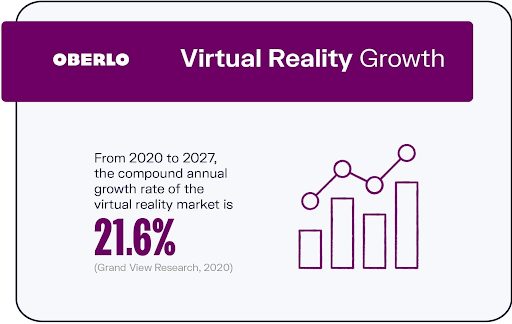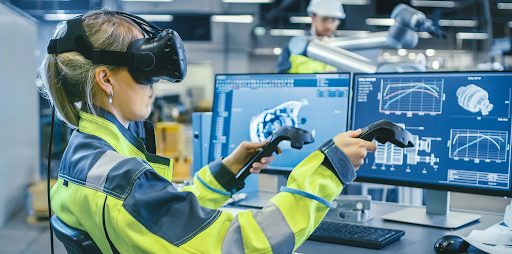
Augmented and virtual realities are two crucial components for businesses these days. Many business projects are seeing improvement due to AR and VR. Also, there are various training programs available to teach people how to use them. Here, we’ll look at how AR and VR play an essential role in improving businesses.
According to Statista, the augmented reality, virtual reality, and mixed reality market is expected to reach $30.7 billion in 2021 and close to $300 billion by 2024.
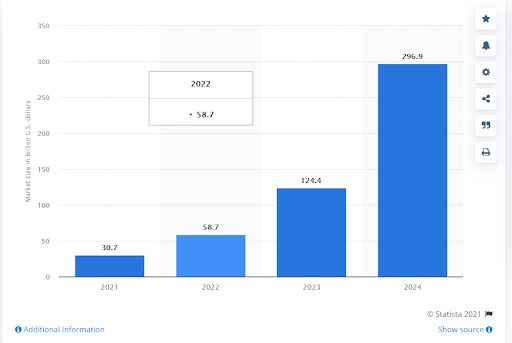
In 2021, the two technologies will impact your corporate environment in many ways. As software becomes more widely available and hardware costs fall, you’ll be forced to integrate the two technologies into your daily operations.
To understand these changes, you’ll need both your vision and your imagination. The article will discuss the use cases of AR/VR in the current scenario and how these two technologies can reform your business.
Lets get started!
ARs Practical Uses In Business Today
AR applications appear to be moving in the direction of more realistic business uses. For example, Lacoste, a sportswear company, offers an app that allows in-store buyers to place their foot on a specific point to view the shoes of their choice via their smartphone, displaying product details, custom sizes, and how it would look on customers.
The New York Times deployed an augmented reality app connected with their 2018 Winter Olympics to allow users to bring up athletes on the screen to explain their tactics just as those moves were taking place.
Moreover, companies like Warby Parker (virtual eyeglasses try-on) and IKEA (virtual furniture installation in rooms) enhance AR experiences without the need for specialist hardware.
Well, if you want to incorporate this cutting-edge technology into your business process, you can hire AR developers with relevant expertise.
VRs Uses In Business Today
We’re living in an age when virtual reality is becoming more than just a concept. Tech giants like Google, Facebook, Samsung, HTC, Huawei, and many others create VR devices that bring realistic worlds to life.
For a few years, smartphones and headsets have been the most prevalent method of delivering a VR experience. This has been the most accessible way for consumers to try out virtual reality.
The virtual reality market is far more developed than the current augmented reality business. To create an engaging VR experience, the necessary software tools, and hardware platforms are now available.
Virtual reality experiences are increasingly finding new pathways into our lives, thanks to the availability of more complex systems like the Oculus Rift, which are combined with 360 cameras. Virtual reality also shows some beneficial commercial uses, ranging from real estate to tourism.
How AR/VR is Transforming Businesses Across Different Sectors?
Augmented reality and virtual reality offer various possibilities for businesses beyond gaming, storytelling, and other entertainment applications. Technology is already changing how we develop products, run meetings, connect with customers, and more.
There is a long list of ways that AR/VR can be used to improve business. Please take a look at how entrepreneurs have already been using virtual reality and augmented reality to enhance their operations.
#1 Retail
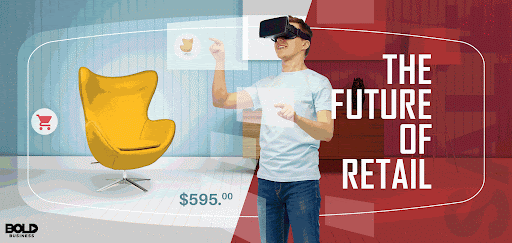
If you work in retail, you’ll try to provide your customers with the best buying and digital experiences. With the barriers between physical and digital commerce blurring, augmented and virtual reality will allow your company to bridge the gap.
According to projections, the retail sector could add $204 billion to GDP due to new media entertainment experiences and retail augmentation, such as virtual fitting rooms or assessing the look of furniture in a consumer’s house before purchase.
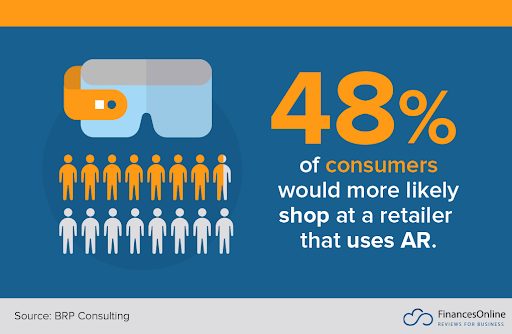
Before your customers can buy something, you’ll need to give them new shopping options and try it online. Virtual showrooms will also be required to replace your traditional retail store.
For example, incorporating AR and VR into apparel businesses will allow shoppers to view clothing items in 3D and virtually try them on. You’ll also need to provide your consumers the option to check out new haircuts or tattoos without making any long-term commitments.
If you’re in the retail sector, virtual reality developers can help you get ahead of the competition and give your customers the finest experience possible.
#2 Manufacturing
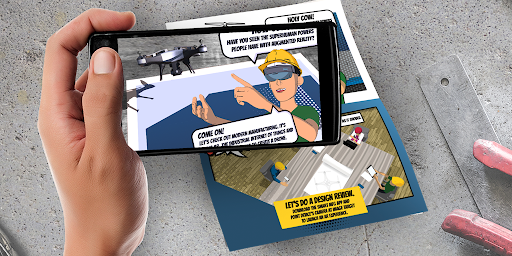
Incorporating AR and VR into the manufacturing sector will shift the number of employment available. As a technician in the manufacturing industry, you’ll obtain virtual help from remote workers or devices. This will assist you in identifying errors and markings, decreasing the amount of guesswork involved in manual labor.
You’ll also be able to streamline manufacturing processes, resulting in higher-quality items at a lower cost. This reduces human mistakes, improves training efficiency, and saves time in the manufacturing process.
#3 Games and Entertainment
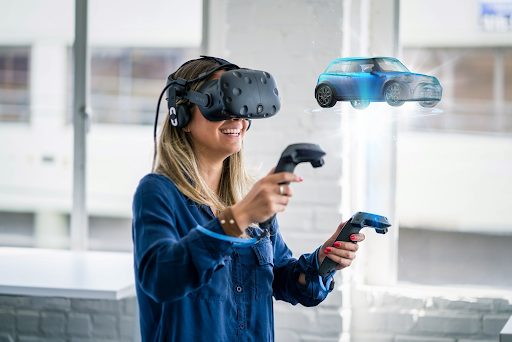
When most people think of AR, the viral Pokémon GO is still the first app that springs to mind. The Oculus Quest, the first all-in-one VR system, is expected to fuel a tremendous spike in VR gaming demand.
In 2020, it generated $22.9 billion in revenue. Simultaneously, more people are experimenting with new ways of playing and creating social gaming scenarios using virtual reality and augmented reality.
Companies can make money from virtual reality games by selling them in stores by generating dynamic QR Codes or compensating companies for advertising. If you own an arcade, investing in VR equipment and AR/VR games will enhance your revenue and bring in more consumers.
Another intriguing business opportunity is AR/VR escape rooms. Entrepreneurs can use modern technology instead of developing an actual escape room, much less modeling numerous rooms like space stations, haunted homes, and so on.
#4 Real Estate and Construction

One of the most significant beneficiaries of AR and VR will be the construction and real estate industries. You’ll be able to walk inside a VR building and detect design or drainage issues if you’re a construction professional, electrician, or plumber. It will have a positive impact on project management, construction costs, and time savings.
If you have a real estate business, you’ll be able to give potential buyers a virtual tour of the building you’re selling or leasing without them having to be there.
#5 Training
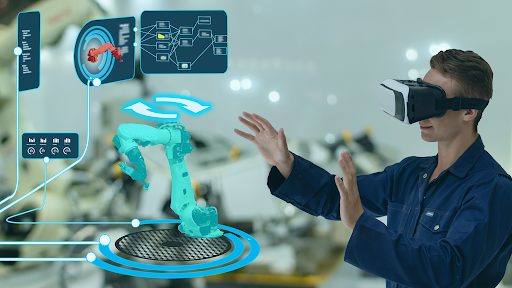
If your work requires hands-on skills, AR and VR can help you with better safety and fewer mistakes. Both technologies will allow you to develop training programs consistent with each employee if you own a business. As a result, they can gain confidence and competence in their profession.
For example, virtual and augmented reality will allow you to practice surgery on a 3D human replica before operating on live patients if you are a trainee surgeon. As a result, you’ll have a platform where you may make mistakes and learn from them while honing your skills.
#6 Tourism and Travel
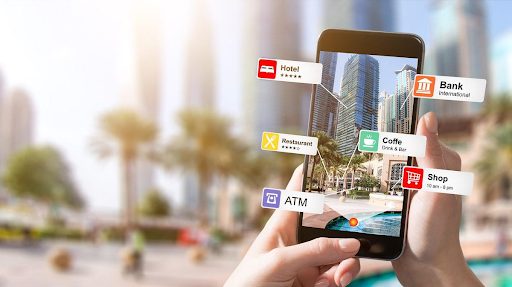
Various modes of transportation, hotel reservations, hospitality, tours and sightseeing, local experiences such as cuisine or festivals, souvenirs, and so on are all part of tourism. As a result, augmented reality business opportunities abound in the market.
Google Maps has received an augmented reality update. The obvious use case is navigation, and the directions show on the screen when users scan the streets using their smartphone’s camera.
AR-enabled GPS apps may show tourist routes, translate street signs, and provide sightseeing advice. Indoor navigation will be made more accessible with AR paired with Wi-Fi, beacons, or ultra-wideband.
#7 Healthcare

The healthcare sector provides opportunities for augmented and virtual reality business ideas. AR apps are already being utilized for several purposes, including assisting patients in recognizing their symptoms and allowing surgeons to view a patient’s body without making extensive incisions.
In healthcare, the two ‘realities’ are predicted to impact patient care and medical training, enabling students to access operating rooms and enhancing consultation options, thus boosting GDP by $350.9 billion.
Virtual reality in hospitals is becoming a reality thanks to ultra-high-definition 4K monitors and video game technology. Simulation capabilities and comprehensive organ mapping are already available thanks to a combination of virtual reality, gaming software, and medical imaging processes.
Surgeons will be able to plan ahead of time and avoid previously unexpected difficulties. Invasive procedures will be reduced, patient problems will be reduced, and recovery times will be shortened.
#8 Advertising & Marketing
AR may be used creatively to build customer interactions while also improving the likelihood of a purchase. Customers are more likely to utilize a brand’s mobile app if the content is enjoyable. Customers and competitors who haven’t seen anything like it yet will be surprised by unique and creative AR experiences.
To improve its promotional materials, Onix-Systems used augmented reality. The Onix AR mobile app exposes vivid details of our printed booklets, allowing us to present the company’s thrilling story in a corresponding format. Users aim their mobile device at a page, which comes live.
A virtual experience captures the user’s full attention, allowing advertisers to target their message ideally. Like PCs and smartphones, VR will be the next central computing platform and a battleground for marketers and brands.
Bottom Lines
In the coming years, augmented and virtual reality technology will lead to a business revolution. If you want to survive the test of time, you should align your firm with technology.
As more retail, real estate, automotive, and media companies try to engage their core consumers with AR/VR, the use of the technology is projected to grow. Therefore, you should contact a top mobile app development company in India to incorporate these technologies into your business process.
Furthermore, service providers are likely to see a lot of potential in developing AR/VR solutions for their clients. As a result, AR and VR are poised to expand across major regions, industries, and sectors for the greater good.
Frequently Asked Questions:
Q1: What are Virtual Web Applications (VWAs)? Is this a Virtual Reality experience?
No. Because virtual reality always requires technology to immerse users in a separate world, many people confuse it with VR.
Q2. Can I get information about my customer using augmented reality or virtual reality?
Yes! You can gain fresh insights into customer behavior. This is beneficial since it improves the customer experience.
Q3: What Industries Make Use of Augmented Reality and Virtual Reality?
Many services and products use the same technology. As a result, the possibilities for industry applications are endless. Both technologies are extensively used in the following industries: Architecture, Engineering, Construction (AEC), Healthcare, Arts & Education, Training, and many others.

